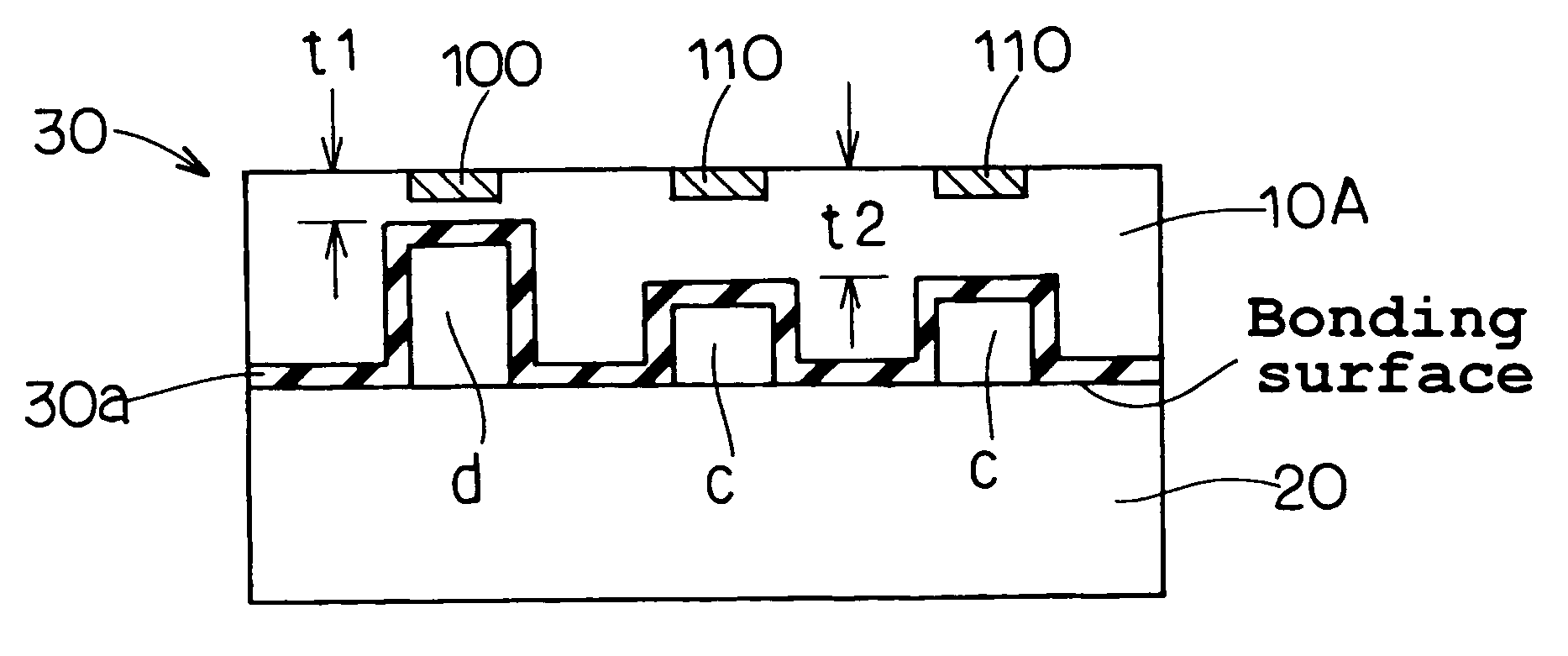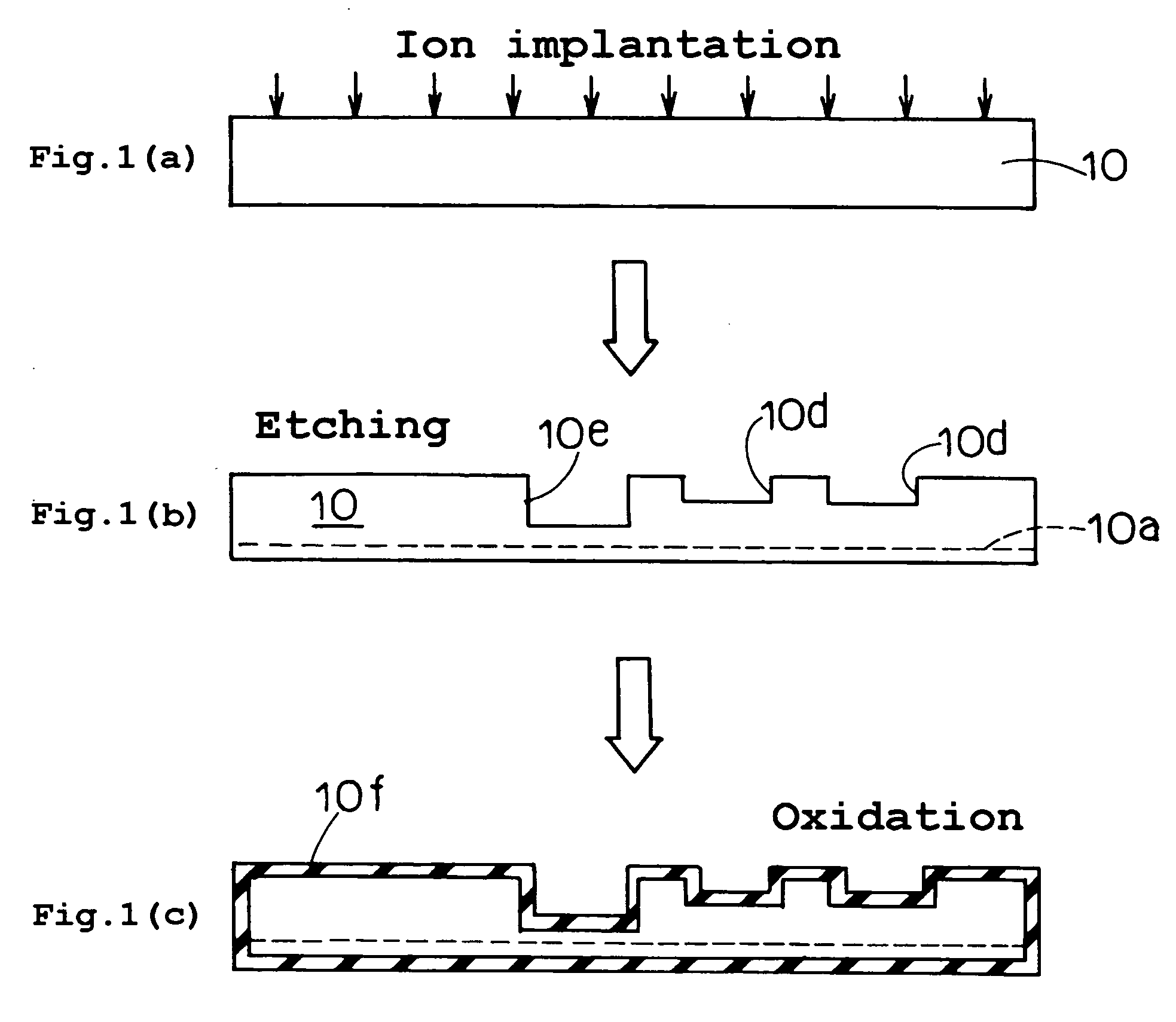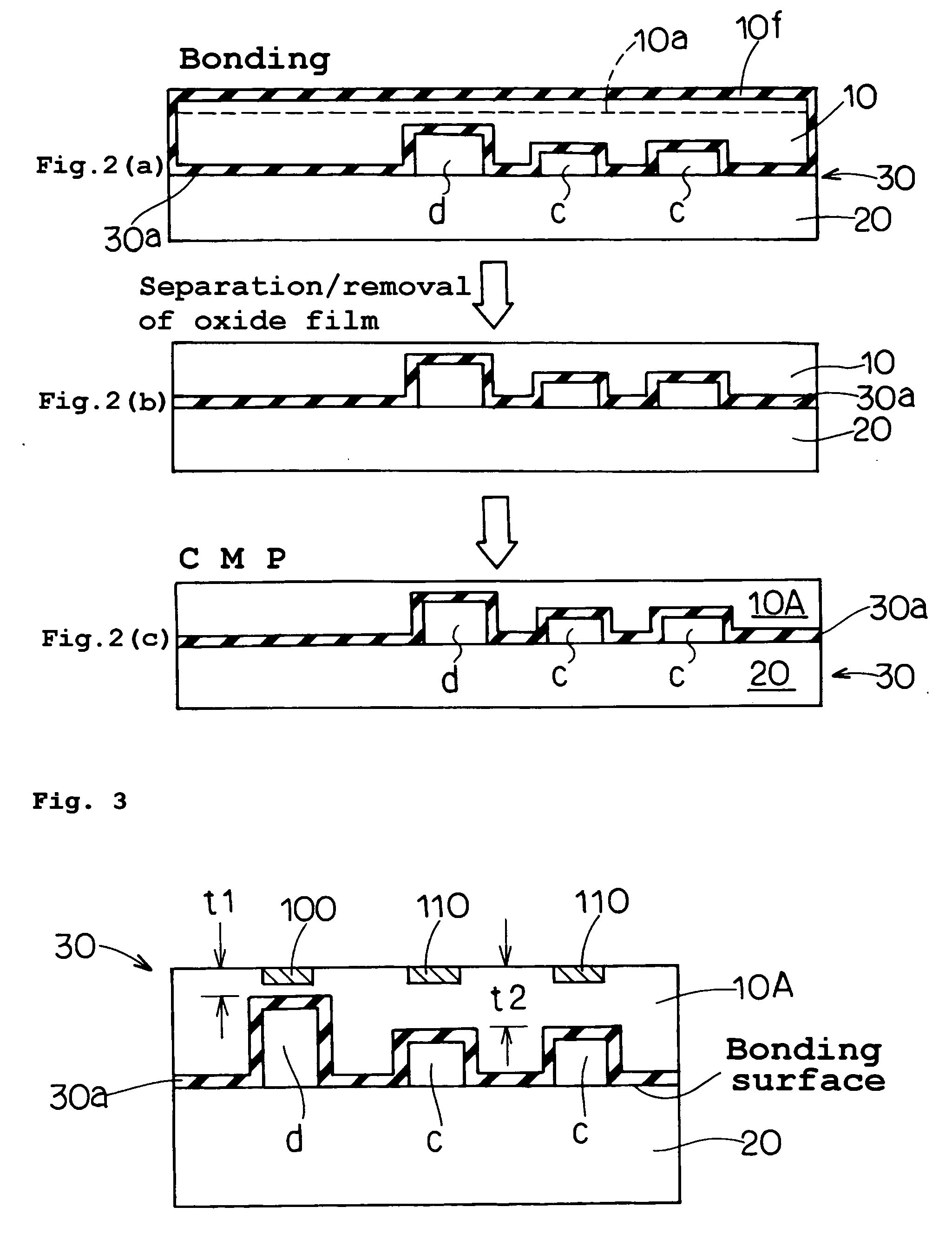Pasted soi substrate, process for producing the same and semiconductor device
a soi substrate and semiconductor technology, applied in the direction of semiconductor devices, electrical devices, transistors, etc., can solve the problems of difficult control of the dimension of the trench to be formed in the surface of the semiconductor substrate, and/or the heat treatment condition for forming the plate-like cavity through the migration of silicon atoms, and achieve the effect of optimal
- Summary
- Abstract
- Description
- Claims
- Application Information
AI Technical Summary
Benefits of technology
Problems solved by technology
Method used
Image
Examples
first embodiment
[0063] Referring to FIG. 1 through FIG. 3, a bonded SOI substrate and a manufacturing method thereof according to the present invention will be described.
[0064] The bonded SOI substrate according to this embodiment is characterized in that a predetermined number of shorter cavities “c” and a predetermined number of taller cavities “d” defining their heights taller than said shorter cavities “c” reside in an active layer wafer 10 side with respect to a bonding interface between an active layer 10A and a supporting substrate wafer 20. This difference in height results in a difference in thickness of the SOI layer (active layer) 10A in these regions. In FIG. 3, the SOI layer 10A having the thickness “t1” is formed above the cavity “d” and the SOI layer 10A having the thickness “t2” is formed above the cavity “c”, respectively. It is to be noted that t1
[0065] As it is, a CMOS transistor 100 will be formed in this region of the thinner silicon layer and a bipolar transistor 110 will...
second embodiment
[0079] Turning now to FIG. 4 through FIG. 6, the present invention is illustrated.
[0080] The manufacturing method of the SOI substrate according to this embodiment is characterized in that in the step prior to the hydrogen ion implantation, firstly a silicon-germanium thin film 10b is epitaxially-grown on the surface (mirror-surface) of the active layer silicon wafer 10, and secondly a silicon thin film 10c is successively epitaxially-grown on the surface of the silicon-germanium thin film 10b, as shown in FIG. 4.
[0081] It is to be noted that as the active layer silicon wafer 10, such a silicon wafer may be employed that has been pulled up by the CZ method (Czochralski method) and processed by the slicing, beveling, lapping, etching and mirror-surface polishing.
[0082] Subsequently, the hydrogen ions are implanted into the interface between this silicon-germanium (SiGe) thin film 10b and the active layer wafer 10 or into the SiGe film 10b, or otherwise into the silicon substrate im...
third embodiment
[0093] Referring now to FIG. 7 through FIG. 9, the present invention is illustrated.
[0094] Firstly, a single crystal silicon ingot that has been pulled up by the CZ method is further processed through the slicing, beveling, lapping, etching and polishing to thereby prepare the active layer wafer 10 having a thickness of 725 μm, a diameter of 200 nm, and an initial oxygen concentration of 14.0×1017 atoms / cc, with its surface having been mirror-surface finished (FIG. 7).
[0095] Secondly, hydrogen ions are implanted at a rate of 5.0×1016 atoms / cm2 into the active layer wafer 10 by using a medium current ion implanter with an accelerating voltage of 100 keV so as to achieve the depth of implantation of about 2 μm from the wafer surface side. In this way, the hydrogen ion implanted layer 10a is formed in the surface layer of the active wafer 10 at a predetermined depth from a surface thereof as an extending plane.
[0096] On the other hand, the supporting substrate wafer 20 is prepared by...
PUM
 Login to View More
Login to View More Abstract
Description
Claims
Application Information
 Login to View More
Login to View More - R&D
- Intellectual Property
- Life Sciences
- Materials
- Tech Scout
- Unparalleled Data Quality
- Higher Quality Content
- 60% Fewer Hallucinations
Browse by: Latest US Patents, China's latest patents, Technical Efficacy Thesaurus, Application Domain, Technology Topic, Popular Technical Reports.
© 2025 PatSnap. All rights reserved.Legal|Privacy policy|Modern Slavery Act Transparency Statement|Sitemap|About US| Contact US: help@patsnap.com



